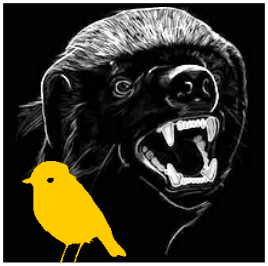Equus kiang photo © Jan Reurink
A counterargument to countershading

Prof. Mumblebard claims: “Tibetan wild ass is counter-shaded to blend into the environment. The white ventral surfaces tend to cancel give-away shading in the sunlight, making the animals plain and enhancing their cryptic colouration.”
 Robin and the Honey Badger respond: “The pale panels on the Tibetan wild ass extend far too high on neck, scapula and haunches, and contrast far too much with the dark part of the flank, to be explained as counter-shading. The effect is to catch the sunlight like a flag rather than to hide the animals. Like ruminants of open habitats (e.g. springbok), this equid is coloured conspicuously, making it easier for the herd to monitor members’ positions and communicate any alarm instantly. Furthermore, the dark-pale contrast on the flanks makes it hard for the Tibetan wild ass’s main predator, the wolf, to distinguish heavily pregnant, vulnerable individuals.”
Robin and the Honey Badger respond: “The pale panels on the Tibetan wild ass extend far too high on neck, scapula and haunches, and contrast far too much with the dark part of the flank, to be explained as counter-shading. The effect is to catch the sunlight like a flag rather than to hide the animals. Like ruminants of open habitats (e.g. springbok), this equid is coloured conspicuously, making it easier for the herd to monitor members’ positions and communicate any alarm instantly. Furthermore, the dark-pale contrast on the flanks makes it hard for the Tibetan wild ass’s main predator, the wolf, to distinguish heavily pregnant, vulnerable individuals.”
Please join us here at the Bio-edge with your own comments. In the discussion below we encourage links to any evidence supporting either Prof. Mumblebard or Robin and the Honey Badger. Illustrations are welcome but please cite all sources or we may be forced under copyright to delete your comment.

